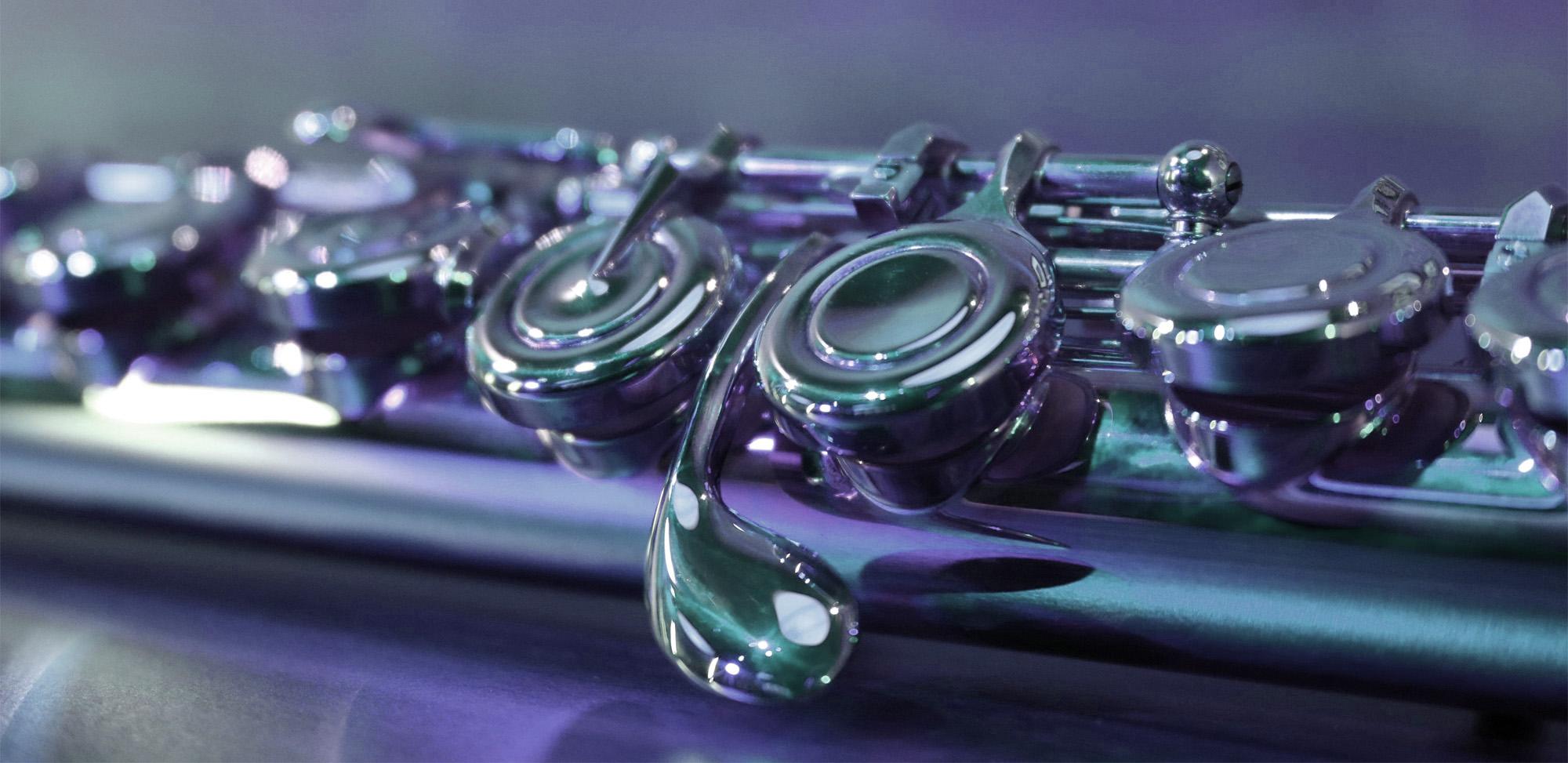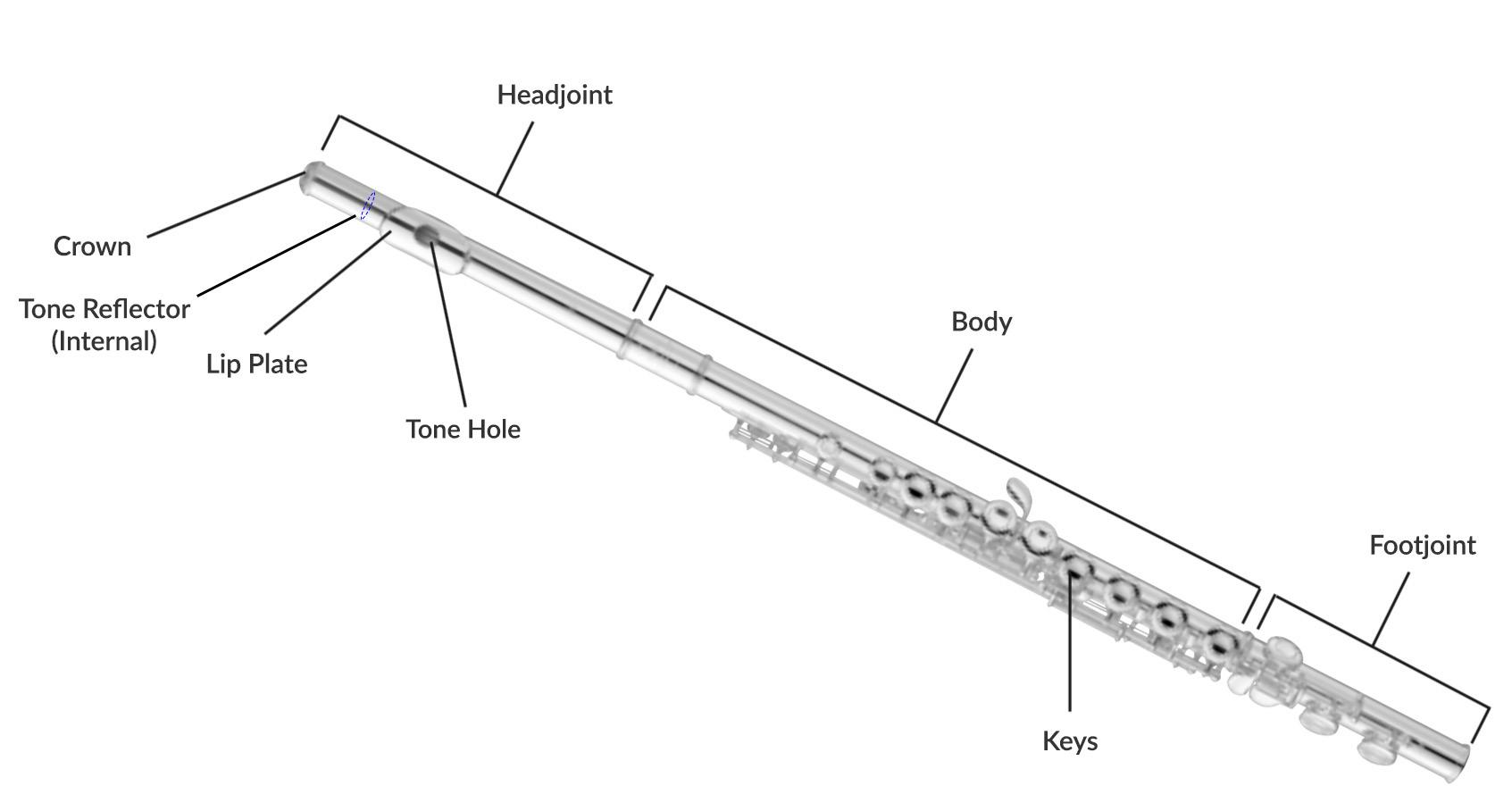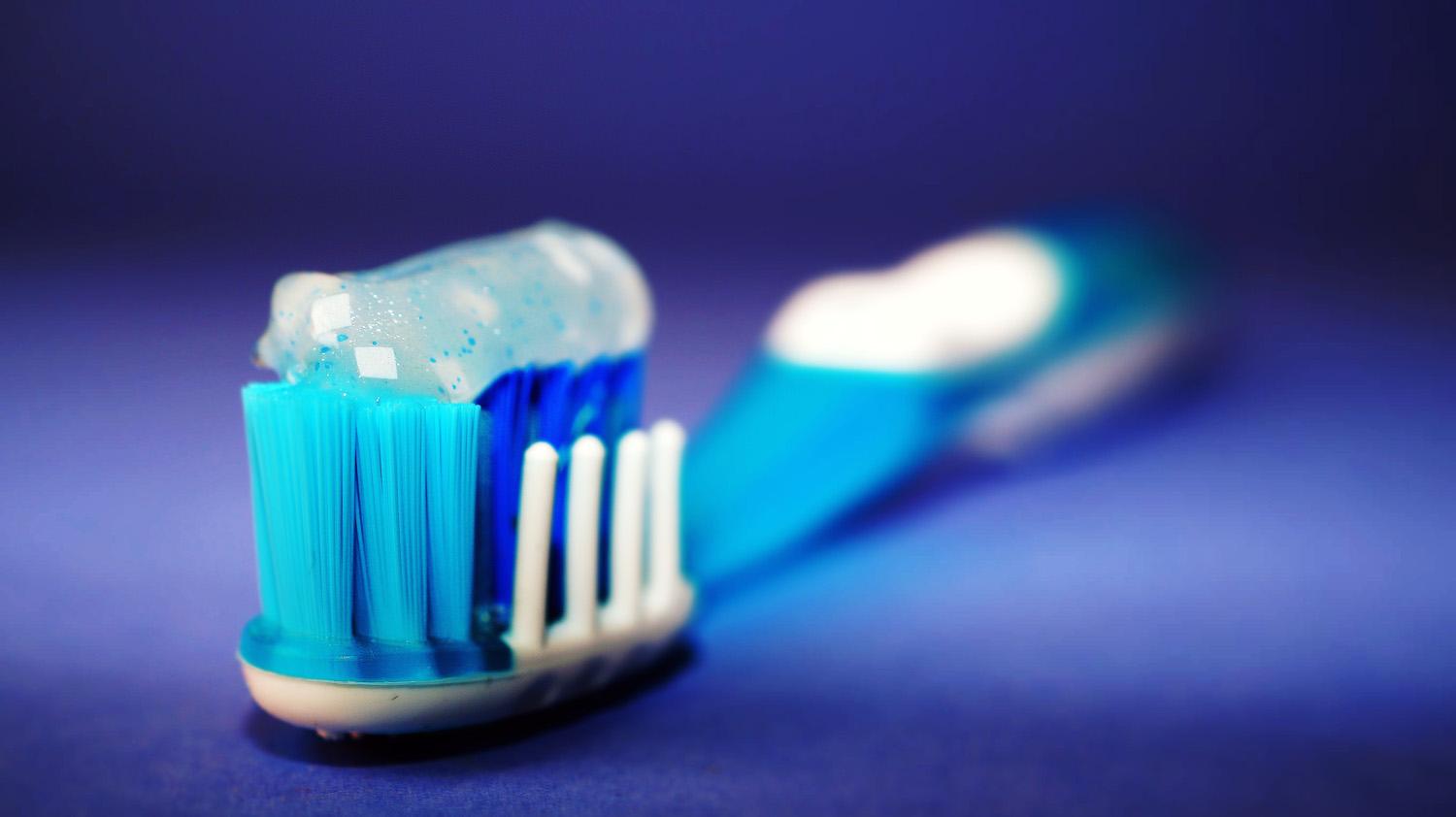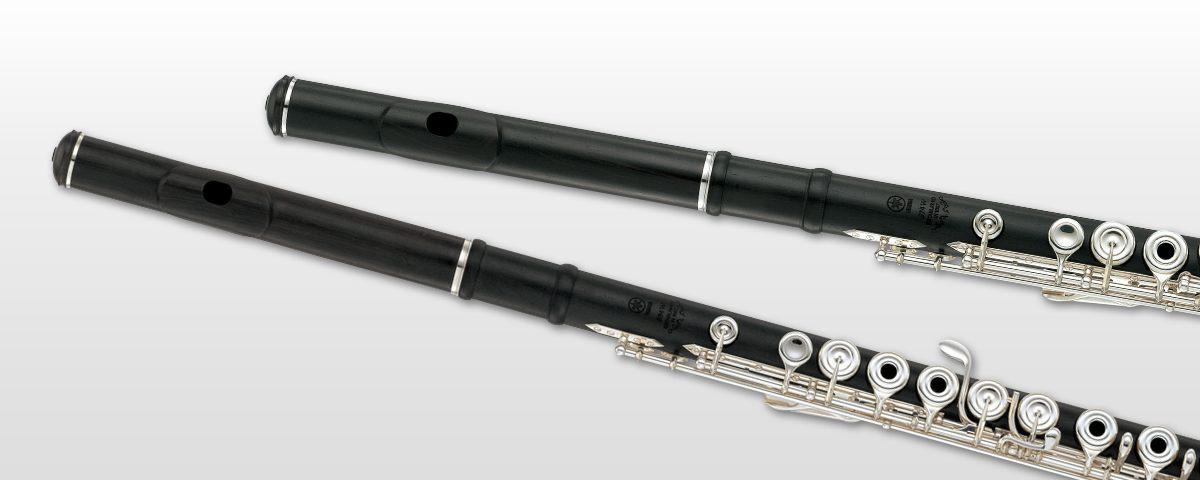

Most musical instruments require and benefit from regular care maintenance; look after your instrument and you'll be rewarded with optimal response and performance each time you practise or perform.
The flute is no exception. Carefully formed either from metals or crafted from select tonewoods, the flute has an array of keys to precisely control the air moving within the body. Here's an easy guide to looking after your flute, followed by some recommended essentials to help you.
Contents:

Flutes are usually made from 3 main sections:
Most flutes are made of metal (usually silver-plated); others are crafted from tonewoods (such as our wooden YFL-800 Series Flutes).
Before playing, it's important to make sure your hands, face and teeth are clean; any residue on your skin can be detrimental to the flute's keys and body whilst any food debris present in the mouth could find its way into the flute itself - which could block the airway and risk mould developing.

Wooden flutes can give a beautifully mellow and warm tone. Unlike metal flutes, wooden flutes require conditioning when brand new in order to regulate the moisture absorption of the tonewood.
As tempting as it may be, if you immediately play a brand new wooden flute for a long period of time, the newly crafted wooden body will quickly absorb any moisture making its way from your breath through the lip plate. As a result, the body can begin to swell - potentially deforming the flute and, in severe cases, causing it to split and break.
To protect against this, you can 'condition' wooden flutes by playing for a maximum of 15 minutes each day for the first week, so that the body can only absorb a limited amount of moisture - and which, to a point, decreases its absorption factor. If at any point the flute's tone changes and it seems as though the flute has become blocked, stop playing immediately to remove moisture from the body.
After the first week of conditioning, gradually increase the amount of time each day that you play the flute.

Generally, if the flute has been stored at normal room temperature (19ºC - 21ºC) with a normal level of humidity, you should be able play it without concern. However, a flute's tone and pitch can be susceptible to more extreme temperatures whilst condensation can often occur when playing in cold environments (which can disrupt the air channel in the flute). And, more seriously, wooden flute bodies can split and crack when exposed to extreme temperatures and sudden temperature & humidity changes.
To protect against complications from temperature and humidity:
For ease of storage and cleaning, flutes usually disassemble into three parts - the head joint, main body and foot joint. Unlike some other woodwind instruments (which use cork to make an airtight join), the three parts of both metal and wooden flutes are designed to fit together perfectly, with only microns of clearance at the metal joins.
No grease or oil should ever be used on the joins - if it feel that the joints are getting stiff when you assemble or disassemble the flute, wipe both the visble outer surface and hidden inner surface of the join with a dry, lint-free cloth to remove any dust or dirt. If the flute is very dirty, wiping it with a silver cloth can help remove any fine dirt.

Regardless of whether your flute is made from wood or metal, it's essential to remove excess moisture from all parts of the flute - including the main air way and from the pads on the underside of the keys.
The main airway that passes through the flute's joints and body is where most moisture collects - it's important to remove it.
You'll need:
Follow these easy steps:

Moisture can also collect on the pads underneath the keys - particularly covered keys (those which are a single flat surface without a hole. It's important to remove this moisture to stop the pads from deteriorating.
You'll need:
Follow these easy steps:

Whilst there's no need for a full service every day, we recommend giving your flute some extra attention at least once a month:
What you'll need:
Follow these easy steps:

The keys on the flute have been precisely designed and engineered to allow control over pitch and tone when you play. But as with any mechanism, it's important to check they're in good working order.
What you'll need:
Follow these easy steps:

During a full service, a flute is completely disassembled and thoroughly cleaned - giving the opportunity for any damage or wear to be discovered and addressed.
Assuming normal daily and monthly care is given to your flute, we'd recommend having your flute serviced by a qualified flute technician once every year.